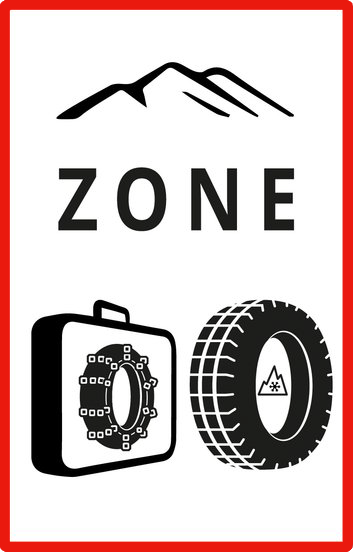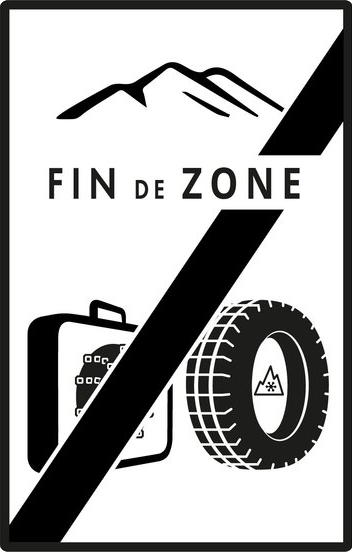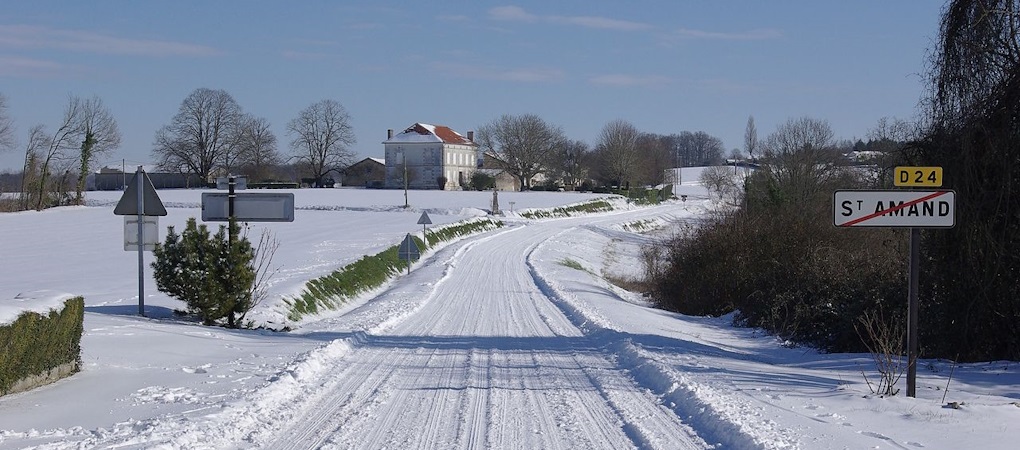Driving in winter
The Alps and Pyrenees are popular places to visit in the winter, particularly the ski resorts that attract so many tourists, both domestic and foreign.
However driving in winter conditions can be challenging and potentially dangerous, so in some areas it is a legal requirement to equip your vehicle with suitable tyres, or to fit snow chains or socks instead.
When do the rules apply?
Municipalities in 34 départements are affected, which are generally found in one of France's mountainous regions. A detailed map of the areas affected can be found on the Sécurité Routiere website (in French). The winter rules apply from 1 November to 31 March each year.
So if you are travelling to any of France's mountainous regions - Alps, Pyrenees, Jura, Vosges or Massif Central - then the winter driving rules are likely to apply.
One thing to bear in mind is that you can use them anywhere in France if conditions mean their usage is benefitial.
Signage
Whenever you enter or leave a region where the use of winter tyres or snow chains are required, you'll encounter these signs:


If a road is particularly dangerous, then signage may stipulate the mandatory use of snow chains on all vehicles, even if they are fitted with winter tyres:
![]()
This sign applies whenever it is displayed: sometimes it will only be displayed where conditions are treacherous, at other times it could be used all year - unlike the "Zones" signs above, their validity is not limited to November to March.
So what do I need to use?
Any vehicle entering a designated mountainous area must be fitted with one of the following:
Winter tyres - these are tyres with larger tread grooves than conventional tyres, which improves grip and traction by dispersing snow and slush more effectively. They are designed to work just as well as regular tyres but where the temperature is below 7°C.
You need to make sure tyres have the 3PMSF (three peak mountain snowflake) symbol in order to be compliant, otherwise you will need to use snow chains. All-weather tyres are also acceptable if they feature the same symbol.
Studded tyres - these are tyres with metal studs inserted into the rubber compound, and can be used instead of 3PMSF tyres. However their use comes with a couple of caveats - you are not permitted to exceed a speed of 90 km/h, and a decal stating this speed must be displayed on the rear of the vehicle.
Snow chains - these must be fitted to your drive tyres (front only on 4x4 vehicles) if your vehicle doesn't have either of the above types of tyres. Make sure you keep your speed down, as you must not travel at more than 50 km/h. Do not use them on roads that are not covered in ice or snow, otherwise you may cause severe damage to the road surface and your vehicle.
A permitted alternative to snow chains are snow socks - these are simpler to fit to your tyres, and easier to store when not needed (plus they are cheaper than chains!). However they are not always as affective as chains if snowfall is particularly heavy.
Other things to note...
It is strongly recommended you test fitting your chains or socks before setting off, in order to ensure they fit your vehicle's tyres as well as the gap between the wheel and the bodywork.
You must ensure chains or socks are stored in the vehicle, in order that you can quickly access them once you reach an area covered by the winter regulations.
If you're driving an articulated lorry, or a bus or rigid truck towing a trailer, then snow chains must be used on at least two drive wheels regardless of the tyres fitted.
Picture credits
St Amant entrance is
taken from an original by JLPC and used under
this Creative Commons license
